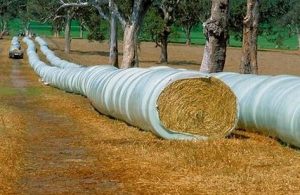The Increasing Reliance on Silage Wrap
The use of Silage Wrap for preserving silage is on the rise in Western Australia. In 1995, there were an estimated 150 to 160 tonnes of silage husk polyethylene used in Western Australia alone and about 1500 tonnes worldwide. This is a significant increase from the previous year when an estimated 95 tonnes of silage husk polyethylene were imported to Western Australia and the other states of Australia that produce and export their silage.
Fodder is grown in many parts of Australia, including the Pilbara in the state of Western Australia, where the state government has the mandate to promote the production and export of images. Silage husk is used as a preservative for silage. It likewise can be used lubricant and to prevent spoilage, as well as being harvested from fields throughout Western Australia.
Silage husk, when harvested from a field, must be processed in a specific way. The processing will include stripping, dehydrating and drying the hay. The hay must be dried by an oven that will keep the silage cold enough to be suitable for making silage. A silica oven is usually the preferred equipment because of its ability to retain heat and moisture without losing its coolness, ensuring that the silage remains viable for making hay.
Silage manufacturers and suppliers such as BalingTwine.com.au are also using other methods of processing and preserving the silage. Many silage producers and suppliers now offer their customers a range of different silage wraps, such as clay-based silage wraps, organic-based silage wraps, as well as silage blends and mixes. The silage industry uses these silage wraps to preserve silage so that it can be used for making silages at home, for retail purposes and other processing. Silage wraps are commonly sold in pre-packaged packages and sometimes as single packets, which can then be sold individually or for resale to customers. Silage wraps come in a variety of different types, including both wet and dry ones and is often referred to as “soil-based” silage wraps or “soil-less” silage wraps.
 Silage Wrap is produced from silage materials that have been mechanically cleaned of the plant residues, such as weed seeds, plant stalks and leaves, plant hairs and roots, plant litter, etc. Silage plants are then harvested and cut into manageable pieces. The pieces are then mechanically mixed with the desired amount of the silage-bearing substances to form a consistent and cohesive mass, which is then dried and then re-hydrated before being used as fodder. or used as silage to make silages.
Silage Wrap is produced from silage materials that have been mechanically cleaned of the plant residues, such as weed seeds, plant stalks and leaves, plant hairs and roots, plant litter, etc. Silage plants are then harvested and cut into manageable pieces. The pieces are then mechanically mixed with the desired amount of the silage-bearing substances to form a consistent and cohesive mass, which is then dried and then re-hydrated before being used as fodder. or used as silage to make silages.
Silage manufacturers and suppliers also use enzymes, yeast, and other microorganisms to make silage, in addition to the silage-bearing materials. These substances provide additional benefits to the silage, such as adding nutrients to the silage to enhance its health.
Many imaging companies include enzymes in their silages for improved taste and texture. Some of these enzymes are considered essential for optimal silage production, especially those that improve enzyme activity, thereby improving the silage’s taste and texture. Some of the other ingredients used by many staging companies include alfalfa leaf powder, beet pulp, borax, wheat straw, lime juice, vitamin E, lime juice, beet pulp and other organic materials.
Some of the additives that can be added to silage during processing include soy sauce, yeast and yeast extract. These substances can help improve the silage’s health by providing some nutritional benefits, which can range from improving silage’s taste and texture to aiding in the production of fodder.
Other ingredients in the hay can be used to improve the processing of the silage. These include enzymes, vitamins and mineral salts that can enhance the silage’s absorption rate, as well as enhancing its colour and texture. Some of these ingredients also help to add nutrients to the silage.
Silage from BalingTwine.com.au is made from a variety of materials; it can vary depending on the amount of silage. Silage is a very nutritious food for those who eat a varied diet and for those who want to have healthy, nutrient-rich food that tastes good as well.